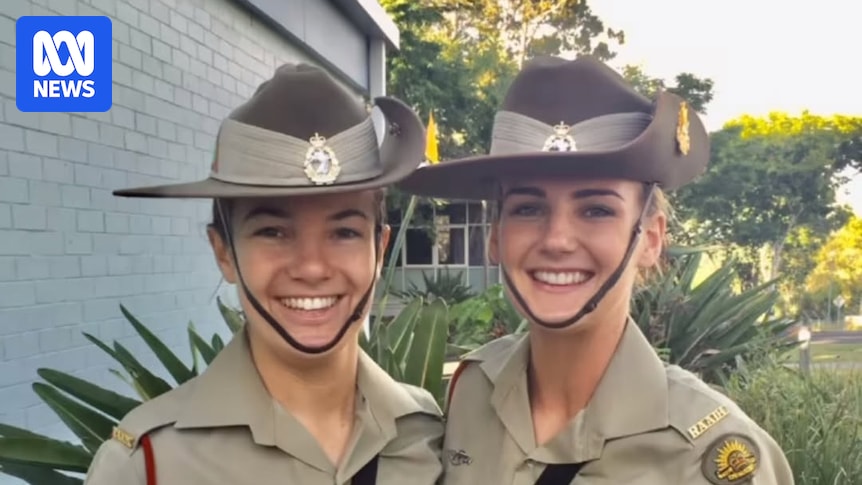
Elena Rowland vividly remembers the day she learned her friend and former colleague, Shannen Box, had died by suicide. “I felt sick. I couldn’t believe it, it didn’t feel real,” she said. Her 29-year-old friend — who had just bought a house and completed her apprenticeship, and was deeply loved — was gone.
“Nobody knew that she was fighting this internal war, which made it so shocking to everybody when she did die and caused a huge crack in the veteran community and to the people that knew her,” Ms. Rowland explained. The pair had met through the Australian Defence Force (ADF) in 2013, when they were posted to a unit at the Enoggera Barracks in Brisbane.
Shannen was remembered as someone naturally talented, admired by her superiors but cherished by friends for her kind heart. “One of the things that made her really special wasn’t what she did or how good she was at everything; it was more like her heart. She had a good heart,” Ms. Rowland said.
Struggles After Service
Shannen discharged from the ADF about five years ago, and Ms. Rowland believes she struggled with the transition. “When you join the army, you get this compass, and it’s like your internal guide. It’s got your role, your tribe, and your mission — so your job, your mates, and your purpose,” Ms. Rowland explained.
“When you get out of the army, not only have you got trauma, you’ve got pain, you’ve lost your mission, you’ve lost your purpose in life, you’ve lost your tribe of mates. Those things were taken away from Shan and I don’t think she knew how to navigate it properly,” she added.
At the time of her death, Shannen also had an outstanding claim to have her service-related injuries recognized by the Department of Veterans Affairs (DVA); a process that many reported to the royal commission as lengthy, unfair, and difficult to navigate.
Ongoing Crisis and Recent Data
Difficulty transitioning to civilian life was also an issue frequently raised during the Royal Commission into Defence and Veteran Suicide. Tuesday marks one year since its final report was handed down, but whether its findings and recommendations are helping curb the disproportionate rate of suicides amongst veterans and serving members is yet to be seen.
Figures released today by the Australian Institute of Health and Welfare (AIHW) revealed there has been a slight decrease in the latest reporting period. Between 1997 and 2023, 1,840 serving and ex-serving ADF members died by suicide. In the most recent reporting year, preliminary data suggests 73 occurred in 2023.
“In terms of trends, what we’re observing is that the suicide rates for ex-serving males and females have seen a general modest decline in recent years from about the mid-2010,” said Paul Pham, head of the AIHW’s defence and veterans’ insights unit.
Mr. Pham noted that while the decline was a “good sign,” it was “difficult to say if an emerging trend is conclusive.” The AIHW has also released a new set of analyses, commissioned by DVA, examining the health services used in the year before an ex-serving ADF member died by suicide. It found 86 percent of those ex-serving members who died by suicide had used health services in the year before their death — one-third of those had a mental health service as the last type of care used.
Efforts to Address the Crisis
Veteran Brodie Moore, who was deployed to Afghanistan when he was 18 years old, said one death to suicide is one too many. “We as a nation owe it to these people that are putting their hand up to serve the nation,” Mr. Moore said. He saw soldiers he served with face struggles, and some “tragically died by suicide,” which inspired him to start his own health services, Medilinks, for ex-service members.
Mr. Moore emphasized the importance of DVA encouraging mental health providers to work with veterans to enhance military cultural competence in the mental health space. A DVA spokesperson stated that the findings from the research would help inform future policy and programs.
“The government is committed to addressing the ongoing impact of service, including preventing future deaths by suicide and providing opportunities for healing,” the spokesperson said.
Last week, Veterans’ Affairs Minister Matt Keogh provided a progress update on the royal commission in federal parliament. He also launched the Defence and Veteran Mental Health and Wellbeing Strategy 2025-2030, which aims to support the defence and veteran community during service or employment, during transition to civilian life, and beyond.
RSL Queensland deputy chief executive of veteran services Troy Watson said it was “encouraging” to see a priority placed on defence and veteran health and wellbeing in the federal government’s update. He acknowledged the milestone also marked a difficult time for veterans and their families as they “contemplate the change that still needs to occur.”
A Call for National Recognition
In dealing with the grief of losing her friend, Ms. Rowland realized those impacted by suicide were falling through the cracks when it came to support. She established The Flannel Project, a registered charity, in Shannen’s honor. The charity is named after Shannen’s dog Flannel, and the flannel flower, the national symbol for mental health awareness.
The Flannel Project aims to support those impacted by veteran suicide. Ms. Rowland is calling for the establishment of a national day — the Flannel Flower Day — to officially remember and commemorate veterans and service members who have died by suicide.
“We want to give survivors of suicide somewhere to put their grief, to honor those who have died from the war within,” Ms. Rowland said. She proposes holding the day on June 21, the winter solstice, symbolizing the journey from darkness into light.







